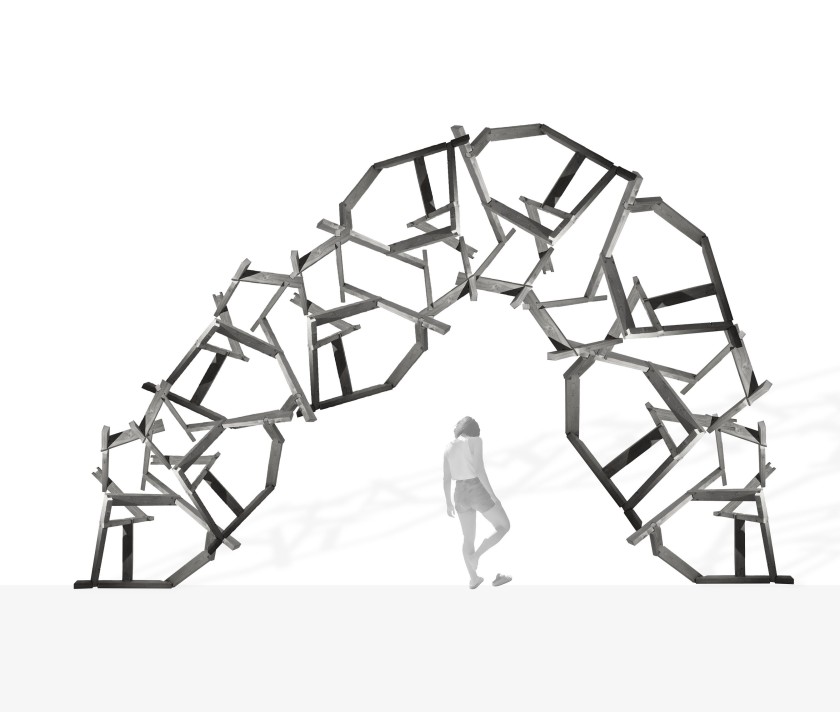 Timber is a rather attractive option when it comes to sustainable building. The fact that it is a renewable resource that takes away carbon dioxide in the process of it’s life-cycle makes it a very viable option for new communities to arise. But it does little good, if the to turn a tree into architecture, a bunch of pollutant and in some cases unattainable materials are required. What i’m trying to achieve with this project is not complete independence from other materials but that the minimization of their use to the bear minimum when it comes to construction. The goal of the project so far was to find a way to join timber parts together that go beyond planar or perpendicular joints in order to construct architectures that are not predetermined in shape or form but only in construction technique. A simple construction system that requires no factories, but only hand tools and utilizes trees as close to their natural form as possible.
Timber is a rather attractive option when it comes to sustainable building. The fact that it is a renewable resource that takes away carbon dioxide in the process of it’s life-cycle makes it a very viable option for new communities to arise. But it does little good, if the to turn a tree into architecture, a bunch of pollutant and in some cases unattainable materials are required. What i’m trying to achieve with this project is not complete independence from other materials but that the minimization of their use to the bear minimum when it comes to construction. The goal of the project so far was to find a way to join timber parts together that go beyond planar or perpendicular joints in order to construct architectures that are not predetermined in shape or form but only in construction technique. A simple construction system that requires no factories, but only hand tools and utilizes trees as close to their natural form as possible.

The System utilizes dry timber joints and dowels for the main skeleton of whatever is to be built, allowing for double curved, intuitive growth to take place when constructing a building, and making the building a dynamic entity instead of a static object that can grow or shrink towards any direction, filling the gaps and meeting the requirements of its inhabitant, whatever they may be. A method that does not predetermine functional or spacial conditions but acts as a tool to create architecture prone to customization.

The system utilizes linear timber elements in the form of sawn timber or potentially logs. Using linear elements means that the process from tree to construction material is minimized without necessarily compromising the form of the architecture.




